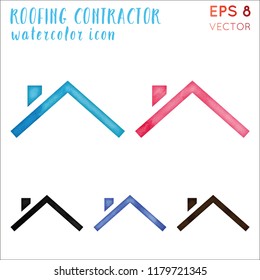When you're choosing between exterior and interior paint, it's important to recognize their essential distinctions that affect both efficiency and visual appeals. Inside paints are crafted for lower VOC degrees and smoother surfaces, making them ideal for interior rooms, while exterior paints are designed to sustain rough climate condition and UV exposure. Each kind serves an unique function, however recognizing when to make use of one over the other can greatly influence your project's result. So, what aspects should you think about when making your selection?
Composition and Formulation
When selecting between interior and exterior paint, recognizing their structure and formula is crucial. Inside paints normally consist of a lower quantity of unstable organic substances (VOCs), making them much safer for indoor air high quality. You'll discover they commonly have a smoother surface, which enhances their ability to stand up to stains and permits much easier cleansing. They're designed to hold up against the roughness of interior settings, including varying humidity degrees and temperature level variations.
On the other hand, exterior paints are created to endure harsher problems. They normally consist of higher degrees of pigments and ingredients to withstand fading from UV rays, as well as to prevent mold and mold and mildew development. Their composition includes more binders and materials, which provide far better bond to surface areas exposed to the components. This ensures the paint can stand up to rainfall, snow, and rising and fall temperature levels without peeling off or splitting.
Performance and Toughness
Assessing performance and longevity is vital when selecting between interior and exterior paint. Interior paint is created for surface areas that experience much less wear and tear. It usually resists fading and scuffing, making it suitable for living rooms and bed rooms. However, it may not stand up well in high-moisture areas like kitchens and bathrooms without appropriate solution.
On the other hand, outside paint faces harsher conditions. It's crafted to stand up to UV rays, rain, and temperature fluctuations. This kind of paint commonly has additives that stop mold and mildew and mildew development, guaranteeing longevity in numerous environments. When https://www.dotnews.com/2022/boston-home-resident-finds-hope-painting make use of outside paint, you can anticipate it to last numerous years much longer than interior paint, provided it's applied correctly.
https://painter-near-me42086.tkzblog.com/31265265/a-guide-to-what-you-ought-to-know-before-hiring-drywall-specialists on the coating options. Interior paints frequently have a range of coatings for aesthetic charm, while outside paints focus on resilience over shine. If you're seeking something that can manage the components, outside paint is your best bet.
On the other hand, if you're focused on indoor looks with much less worry for extreme problems, indoor paint might be appropriate. Ultimately, your option should align with the specific needs of the setting.
Aesthetic Considerations
A fresh coat of paint can transform a space, yet visual considerations play an important function in your option in between exterior and interior choices. When you're choosing paint, think of the state of mind you wish to produce. https://collinkrydk.bleepblogs.com/31902742/a-thorough-overview-to-working-effectively-with-exterior-residence-painters-for-a-superior-end-up permits you to check out a larger range of colors and finishes, allowing you to share your individual design and enhance your home's setting. Whether you choose soft pastels or vibrant colors, the best indoor paint can make your areas feel comfortable, vivid, or serene.
On the other hand, outside paint requires to align with your home's design and the surrounding environment. Below, you're not just making a style declaration; you're additionally thinking about aesthetic charm. Choosing interior painting scaffolding that integrate with your neighborhood can boost your home's value and visual appeal. Keep in mind that exterior paint is additionally subject to fading and weather condition modifications, so choosing a timeless shade can conserve you from frequent repainting.
Inevitably, take into consideration exactly how each choice fits your vision. By straightening your paint selection with your desired visual, you can produce areas that reflect your individuality while preserving performance.
Conclusion
When it pertains to choosing paint, recognizing the crucial differences between interior and exterior choices is essential. Inside paints concentrate on aesthetic appeals and low VOCs, making them ideal for improving your interior areas. On the other hand, outside paints are designed for longevity and weather condition resistance, securing your home from the components. By considering your specific demands and the environment, you can with confidence choose the ideal paint to achieve the appearance and durability you prefer for your area.
